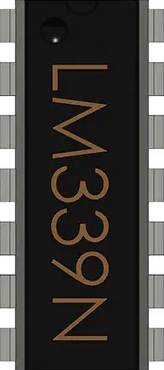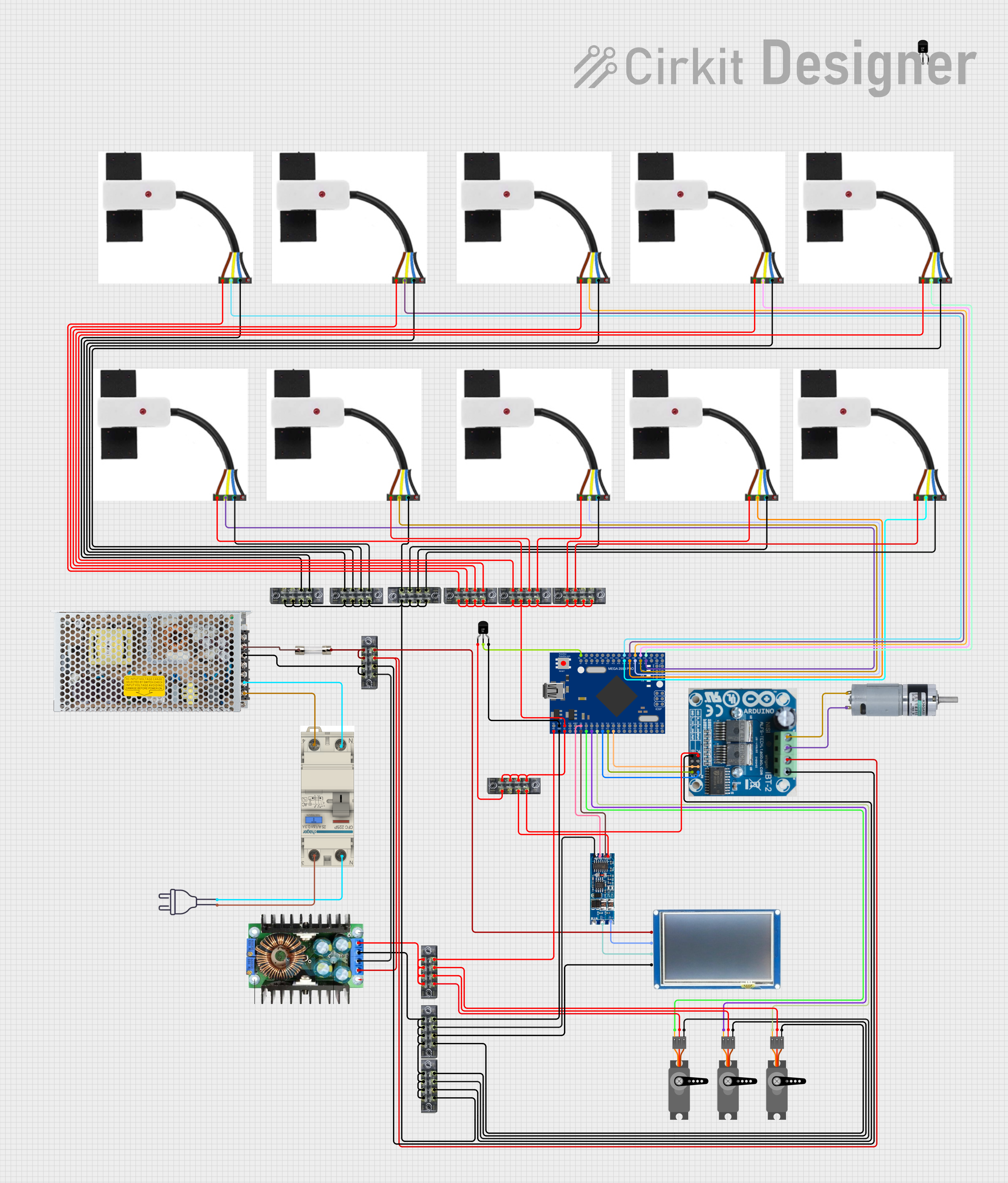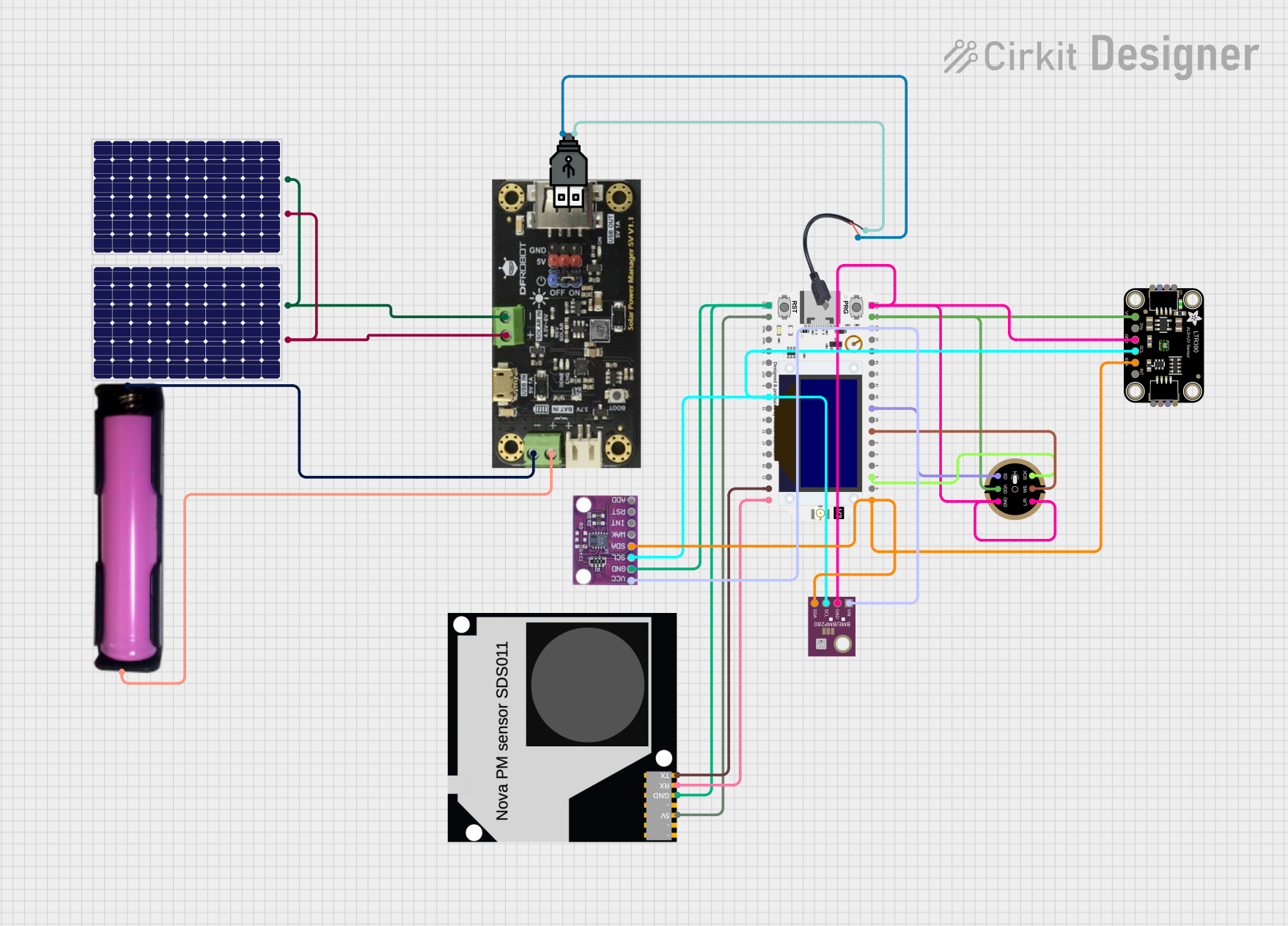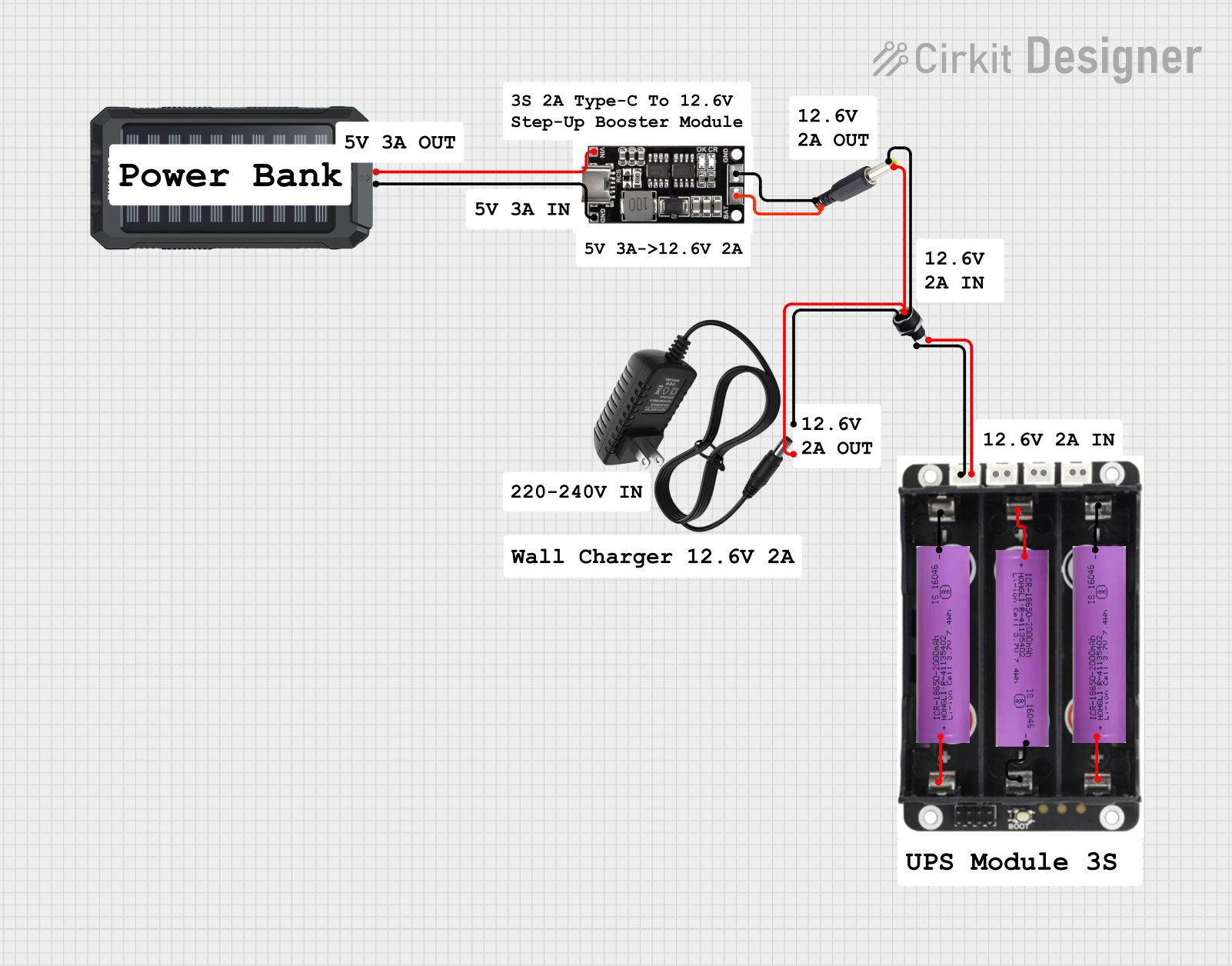
How to Use LM339: Examples, Pinouts, and Specs

 Design with LM339 in Cirkit Designer
Design with LM339 in Cirkit DesignerIntroduction
The LM339, manufactured by Motorola, Inc., is a quad comparator integrated circuit (IC) designed to compare two input voltages and output a digital signal based on the comparison. Each of the four independent comparators within the IC operates with low power consumption and high speed, making the LM339 a versatile component for a wide range of applications.
Explore Projects Built with LM339

 Open Project in Cirkit Designer
Open Project in Cirkit Designer
 Open Project in Cirkit Designer
Open Project in Cirkit Designer
 Open Project in Cirkit Designer
Open Project in Cirkit Designer
 Open Project in Cirkit Designer
Open Project in Cirkit DesignerExplore Projects Built with LM339

 Open Project in Cirkit Designer
Open Project in Cirkit Designer
 Open Project in Cirkit Designer
Open Project in Cirkit Designer
 Open Project in Cirkit Designer
Open Project in Cirkit Designer
 Open Project in Cirkit Designer
Open Project in Cirkit DesignerCommon Applications and Use Cases
- Zero-crossing detectors
- Voltage level shifters
- Oscillators and waveform generators
- Analog-to-digital converters (ADC)
- Signal processing and control systems
- Overvoltage and undervoltage protection circuits
The LM339 is particularly valued for its ability to operate over a wide voltage range, making it suitable for both low-power and high-performance designs.
Technical Specifications
Key Technical Details
| Parameter | Value |
|---|---|
| Manufacturer | Motorola, Inc |
| Part Number | LM339 |
| Supply Voltage (Vcc) | 2V to 36V (single supply) or ±1V to ±18V (dual supply) |
| Input Offset Voltage | 2mV (typical) |
| Input Common-Mode Voltage | 0V to Vcc - 2V |
| Output Voltage (Low) | 0.2V (typical, at 4mA sink current) |
| Output Sink Current | 16mA (maximum) |
| Response Time | 1.3µs (typical, for 5mV input step) |
| Operating Temperature Range | -40°C to +85°C |
| Package Types | DIP-14, SOIC-14, TSSOP-14 |
Pin Configuration and Descriptions
The LM339 is available in a 14-pin package. The pinout and descriptions are as follows:
| Pin Number | Pin Name | Description |
|---|---|---|
| 1 | Output 1 | Output of Comparator 1 |
| 2 | Output 2 | Output of Comparator 2 |
| 3 | Vcc | Positive Power Supply |
| 4 | Output 3 | Output of Comparator 3 |
| 5 | Output 4 | Output of Comparator 4 |
| 6 | Input 4- | Inverting Input of Comparator 4 |
| 7 | Input 4+ | Non-Inverting Input of Comparator 4 |
| 8 | Input 3+ | Non-Inverting Input of Comparator 3 |
| 9 | Input 3- | Inverting Input of Comparator 3 |
| 10 | Input 2+ | Non-Inverting Input of Comparator 2 |
| 11 | Input 2- | Inverting Input of Comparator 2 |
| 12 | Input 1+ | Non-Inverting Input of Comparator 1 |
| 13 | Input 1- | Inverting Input of Comparator 1 |
| 14 | GND | Ground (0V reference) |
Usage Instructions
How to Use the LM339 in a Circuit
- Power Supply: Connect the Vcc pin (Pin 3) to a positive voltage source (2V to 36V) and the GND pin (Pin 14) to ground.
- Input Connections: For each comparator, connect the inverting input (e.g., Input 1-, Pin 13) and non-inverting input (e.g., Input 1+, Pin 12) to the desired voltage signals.
- Output Connections: The output pins (e.g., Output 1, Pin 1) provide an open-collector output. Use a pull-up resistor (typically 10kΩ) to connect the output to the desired logic level voltage.
- Comparator Logic: The output will be low (close to 0V) when the voltage at the non-inverting input is less than the voltage at the inverting input. Otherwise, the output will be high (determined by the pull-up resistor).
Important Considerations and Best Practices
- Open-Collector Outputs: The LM339 outputs are open-collector, meaning they require external pull-up resistors to function correctly. Choose a resistor value based on the desired logic level and current requirements.
- Input Voltage Range: Ensure that the input voltages remain within the specified common-mode range (0V to Vcc - 2V) to avoid incorrect operation.
- Bypass Capacitor: Place a decoupling capacitor (e.g., 0.1µF) close to the Vcc pin to reduce noise and improve stability.
- Unused Comparators: If any comparators are unused, connect their inputs to a fixed voltage (e.g., GND or Vcc) to prevent floating inputs.
Example: Connecting LM339 to an Arduino UNO
The following example demonstrates how to use the LM339 to compare an analog signal with a reference voltage and send the result to an Arduino UNO.
Circuit Setup
- Connect the LM339 Vcc pin to the Arduino's 5V pin and the GND pin to the Arduino's GND.
- Connect the non-inverting input (e.g., Input 1+, Pin 12) to the analog signal source.
- Connect the inverting input (e.g., Input 1-, Pin 13) to a reference voltage (e.g., a voltage divider).
- Use a 10kΩ pull-up resistor on the output pin (e.g., Output 1, Pin 1) and connect it to an Arduino digital input pin (e.g., D2).
Arduino Code
// LM339 Comparator Example with Arduino UNO
// This code reads the output of the LM339 and turns on an LED if the signal
// is above the reference voltage.
const int comparatorOutputPin = 2; // LM339 output connected to digital pin 2
const int ledPin = 13; // Onboard LED pin
void setup() {
pinMode(comparatorOutputPin, INPUT); // Set comparator output as input
pinMode(ledPin, OUTPUT); // Set LED pin as output
}
void loop() {
int comparatorState = digitalRead(comparatorOutputPin); // Read LM339 output
if (comparatorState == HIGH) {
digitalWrite(ledPin, HIGH); // Turn on LED if signal is above reference
} else {
digitalWrite(ledPin, LOW); // Turn off LED otherwise
}
}
Troubleshooting and FAQs
Common Issues and Solutions
No Output Signal:
- Ensure that the pull-up resistor is connected to the output pin.
- Verify that the input voltages are within the specified common-mode range.
Incorrect Output Behavior:
- Check the polarity of the input connections (inverting vs. non-inverting).
- Ensure that the reference voltage is correctly set.
Noise or Instability:
- Add a bypass capacitor (e.g., 0.1µF) near the Vcc pin to reduce noise.
- Use shielded cables for input signals if operating in a noisy environment.
Overheating:
- Verify that the output sink current does not exceed the maximum rating (16mA).
- Check for short circuits or incorrect wiring.
FAQs
Q: Can the LM339 be used with a single power supply?
A: Yes, the LM339 can operate with a single supply voltage ranging from 2V to 36V.
Q: What is the purpose of the pull-up resistor on the output?
A: The LM339 has open-collector outputs, which require a pull-up resistor to define the high logic level.
Q: Can the LM339 handle AC signals?
A: Yes, the LM339 can compare AC signals, but ensure that the input voltages remain within the common-mode range.
Q: How do I handle unused comparators?
A: Connect the inputs of unused comparators to a fixed voltage (e.g., GND or Vcc) to prevent floating inputs.
This concludes the LM339 documentation.